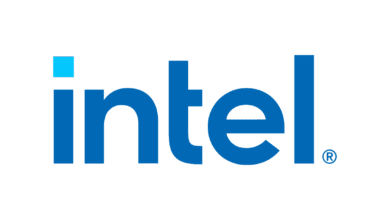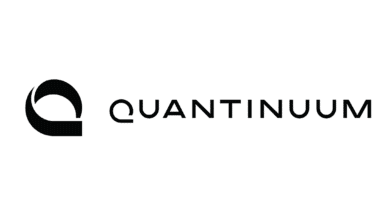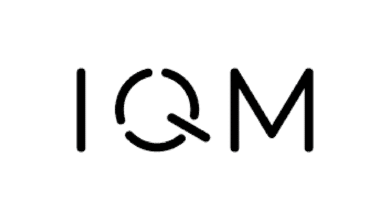Amazon AWS

Table of Contents
(This profile is one entry in my 2025 series on quantum hardware roadmaps and CRQC risk. For the cross‑vendor overview, filters, and links to all companies, see Quantum Hardware Companies and Roadmaps Comparison 2025.)
Introduction
Amazon has taken a dual approach to quantum computing, combining cutting-edge hardware research with commercial cloud services. On the R&D side, Amazon Web Services (AWS) established the AWS Center for Quantum Computing at Caltech in 2019, explicitly aiming to build a fault-tolerant quantum computer capable of solving problems beyond classical reach. This effort focuses on superconducting qubits and novel error-correction techniques, leveraging a team of quantum hardware experts (led by Caltech professors Oskar Painter and Fernando Brandão) and close collaborations with academic luminaries like John Preskill.
In parallel, Amazon’s cloud platform Amazon Braket (launched in 2019-2020) offers on-demand access to a variety of quantum processors through a unified interface. Braket enables researchers and developers to run quantum algorithms on multiple modalities – from superconducting circuits to ion traps and photonic devices – alongside classical computing resources for hybrid quantum-classical workflows. This combination of long-term hardware development and near-term cloud services characterizes Amazon’s strategy: invest in future fault-tolerant architecture while providing present-day quantum computing access and tools to customers.
Milestones & Roadmap
Amazon’s quantum journey formally began in late 2019 with the announcement of the AWS Center for Quantum Computing at Caltech. Early milestones focused on assembling a world-class team and defining a technical path. By 2020, AWS researchers published a comprehensive architecture blueprint for a fault-tolerant quantum computer based on superconducting “cat” qubits and bosonic error-correcting codes. This theoretical design suggested that ~1,000 modular superconducting components could outperform classical supercomputers on certain tasks, and that ~18,000 components might simulate quantum systems (e.g. the Hubbard model) beyond classical reach. In October 2021, Amazon opened its dedicated Quantum Computing facility at Caltech, a state-of-the-art lab for quantum chip fabrication, cryogenics, and testing, marking the transition from theory to hardware development. Around the same time, Amazon’s leaders outlined an aggressive goal: to demonstrate a logical (error-corrected) qubit that outperforms a physical qubit, a critical breakeven point on the road to scalability.
On the cloud side, Amazon Braket became generally available in mid-2020 as one of the first quantum-computing-as-a-service platforms. It initially offered access to third-party devices including IONQ’s trapped-ion qubits and Rigetti’s superconducting qubits, as well as D-Wave’s quantum annealer for specialized optimization problems. Over the next few years, Amazon steadily expanded Braket’s hardware roster. In 2022, it added Xanadu’s Borealis photonic processor, enabling users to experiment with a photonic system that demonstrated quantum advantage in boson sampling. By 2022, Braket integrated QuEra’s Aquila (a neutral-atom analog quantum simulator with 256 qubits) and the latest Rigetti processors. Notably, in August 2024 Braket introduced Rigetti’s 84-qubit Ankaa-2 chip, a superconducting processor in a square-lattice layout, providing continuous availability and improved two-qubit gate fidelity for users. In 2025, Amazon added IQM’s 54-qubit Emerald processor, also built on a 2D grid of transmons with tunable couplers, natively supporting surface-code error correction. This progression shows Amazon’s roadmap of broadening access to increasingly advanced quantum hardware through the cloud.
Meanwhile, the internal hardware program hit a major milestone in early 2025 with the unveiling of AWS’s “Ocelot” chip – the company’s first prototype quantum processor explicitly designed for error correction. Announced alongside a Nature publication, Ocelot implemented a small network of concatenated cat qubits, achieving hardware-encoded error suppression (see Focus on Fault Tolerance below). Amazon claims that scaling this approach could cut the overhead for error correction by up to 90% compared to conventional methods, potentially accelerating their timeline to a practical fault-tolerant machine by around five years.
While Amazon has not published a detailed public roadmap with target dates, these forward-looking statements suggest a plan to rapidly iterate on larger prototypes. Likely next steps include demonstrating a logical qubit with below-physical error rates (if not already achieved by Ocelot), integrating more qubits and higher code distances, and eventually connecting logical qubits into fault-tolerant circuits.
The ultimate goal, as Amazon reiterates, is a scalable quantum computer that can perform hundreds of thousands to billions of quantum gate operations per qubit with only ~1 error in that entire sequence – a level required to tackle commercially valuable problems beyond classical reach. In summary, Amazon’s milestones reflect steady progress: building the scientific foundations (2019-2021), standing up hardware labs (2021), expanding cloud offerings (2020-2025), and recently, tangible demonstrations of their fault-tolerant architecture vision (2024-2025). Each achievement lays groundwork for the next, even if full-scale realization remains several years ahead.
Focus on Fault Tolerance
At the heart of Amazon’s quantum R&D is a deliberate focus on fault tolerance and error correction from day one. Rather than pursuing near-term quantum supremacy with noisy devices, AWS has concentrated on designing qubits and architectures that inherently suppress errors and can be scaled up with manageable overhead. The AWS Center for Quantum Computing’s chosen approach is built around bosonic superconducting qubits, especially the so-called “cat” qubits that store quantum information in superconducting resonators. These cat qubits leverage Schrödinger’s cat states (superpositions of two opposite-phase oscillatory states) to achieve a natural bias: they are extremely resistant to bit-flip errors. In practice, environmental noise like thermal or electromagnetic fluctuations primarily causes bit-flips in ordinary transmon qubits, but in a cat qubit the two basis states are separated in phase space such that bit-flips (switching between the cat states) are exponentially suppressed. This means the qubit “by design” almost never flips spontaneously from |0⟩ to |1⟩, eliminating one major error channel.
Of course, the trade-off of the cat approach is an increased vulnerability to the complementary error, phase flips (analogous to a qubit’s phase randomly inverting). Amazon’s architecture addresses this by layering a quantum error-correcting code on top of the biased qubits. In the simplest implementation, a small chain of cat qubits is used with a repetition code: if one cat qubit accrues a phase error, it can be detected via entangled measurements with a transmon ancilla and corrected using redundancy across the chain. The Ocelot prototype demonstrated exactly this scheme: five cat qubits (each an oscillator mode) were concatenated with an outer code of distance 3 or 5, using transmon ancillas and couplers to perform noise-biased CNOT gates that detect phase errors without introducing bit-flips. Bit-flip errors were essentially “built out” at the physical level by the cat design, while phase-flips were actively corrected by this network of syndrome measurements. Experimental results showed that the repetition code operated below the error threshold: increasing the code distance from 3 to 5 further suppressed logical error rates, and increasing the photon number in each cat resonator exponentially suppressed residual bit-flip rates. In other words, Amazon achieved the two key hallmarks of a viable fault-tolerant scheme – an error-correcting code that improves with scale, and biased qubits that dramatically reduce overhead – validating their hardware-efficient QEC approach.
Amazon’s focus on fault tolerance extends beyond just qubit design; it permeates their entire research program. Significant investment goes into materials and engineering to improve coherence (e.g. developing superconductors with atomically tailored surfaces to minimize defects and noise). They also stress fast operations (“speeding up the clock”) since a useful quantum computer needs not only accurate qubits but also rapid gate execution to perform complex algorithms in reasonable time. Superconducting circuits offer nanosecond-scale gate speeds, an advantage for error correction cycles that must run continuously. Furthermore, AWS is exploring other bosonic codes like Gottesman-Kitaev-Preskill (GKP) qubits as longer-term options for encoding information in oscillator modes. But so far, the “cat code” approach has been their flagship. By biasing one error type and correcting the other, Amazon expects to reduce the overhead of fault tolerance from thousands of physical qubits per logical qubit to perhaps only tens or hundreds – a potentially orders-of-magnitude improvement in efficiency. This could be transformative: Oskar Painter noted that focusing on one error instead of two “reduces the overhead by a factor roughly equal to the square root of the usual number of resources,” meaning a quadratic reduction in qubit count for a given logical error rate. Achieving fault-tolerant quantum computing will still require heroic engineering and scaling up to large numbers of qubits, but Amazon’s strategy is to bake error resilience into the hardware from the start, rather than treating error correction as an afterthought. The recent Ocelot chip is a tangible proof-of-concept, and Amazon plans “future versions… that will exponentially drive down logical error rates, enabled by both improvement in component performance and an increase in code distance“.
In summary, fault tolerance is the lodestar of Amazon’s quantum program – guiding their choice of superconducting cat qubits, their emphasis on error-biased architectures, and the milestones they pursue (with the logical qubit breakeven as a key benchmark).
CRQC Implications
A critical question often posed is when Amazon’s quantum platform might become cryptographically relevant – i.e. capable of breaking modern cryptographic schemes (RSA, ECC) via Shor’s algorithm or other quantum attacks. Achieving such CRQC capability essentially means having a large-scale fault-tolerant quantum computer, since factoring large numbers or deciphering cryptographic keys would require running quantum circuits far beyond the depth and size that today’s noisy devices allow.
Amazon’s public statements suggest that a cryptography-breaking machine is not on the immediate horizon, but their efforts are clearly laying the groundwork for one in the long term. In the AWS quantum research blog, leadership described the “ultimate computational tool” as a machine able to execute hundreds of thousands to billions of quantum gate operations on each qubit with at most one error over the entire algorithm. This error rate (~10-9 or lower per gate) and circuit depth is what’s needed for algorithms like Shor’s factoring algorithm on cryptographically relevant key sizes. Amazon’s focus on fault tolerance is directly aimed at reaching this regime. By improving qubit fidelity and incorporating error correction, they intend to dramatically increase the effective circuit size that can be run reliably. The Ocelot prototype’s success in reducing logical error rates is an early step toward the kind of high-precision, long-running quantum computations a CRQC would require.
That said, when Amazon (or any company) will achieve a CRQC is still uncertain. Even optimistic projections put a full-scale fault-tolerant machine on the order of millions of physical qubits or thousands of logical qubits. Amazon’s own research indicates that solving practical cryptographic or chemistry problems might demand trillions of quantum operations, which is impossible without extensive error correction. No formal timeline has been given by Amazon for reaching such capability. However, the AWS team has implied that their error-biased architecture could accelerate the timeline by a few years relative to other approaches. For example, if other companies estimate a 15- to 20-year journey to a CRQC, Amazon’s 5-year acceleration (as claimed for the Ocelot-based approach) might shrink it to perhaps a decade-plus. It’s important to note these are qualitative goals, not set deadlines. What we can say is that Amazon is keenly aware of the implications of cryptographically relevant quantum computing. In parallel with building quantum hardware, AWS has been very active in post-quantum cryptography (PQC) initiatives. AWS is already deploying NIST-standardized quantum-resistant algorithms (like lattice-based key exchange and signatures) in its security services, preparing defenses against future quantum attacks. This proactive stance indicates that Amazon expects a CRQC to emerge in the future (whether from its own efforts or elsewhere) and is taking steps to mitigate the risk (“harvest now, decrypt later” threats, for instance, are being addressed by upgrading TLS and key management to hybrid post-quantum schemes).
In summary, Amazon’s platform is not yet cryptographically relevant – current Braket-accessible devices are far too small – and their first logical-qubit demonstrations are on the scale of correcting a single qubit’s errors, not factoring large numbers. However, all of Amazon’s R&D momentum is directed toward scaling up to a fault-tolerant architecture capable of CRQC in the long term. One can anticipate that once Amazon’s quantum hardware matures to a few dozen logical qubits with low error rates, interest will turn toward implementing algorithms like quantum cryptanalysis. For now, the timeline to CRQC likely remains on the order of years to a decade or more, and Amazon has not made any explicit prediction. What is clear is that Amazon is positioning itself to be ready: by advancing fault tolerance aggressively and simultaneously hardening its own encryption against the day quantum codebreaking becomes feasible.
Modality & Strengths/Trade-offs
Internally, AWS has chosen superconducting circuits as the modality for building its fault-tolerant quantum computer, but with a twist: instead of using only conventional transmon qubits, Amazon is developing bosonic “cat” qubits (quantum information stored in microwave resonators) stabilized and controlled by transmon-based circuits. AWS’s researchers have been optimistic about such bosonic encodings from early on, proposing hardware-efficient designs that leverage Schrödinger’s cat states to reduce error-correction overhead. Superconducting technology offers several advantages for Amazon’s goals: it can be manufactured using well-established microelectronic fabrication techniques, making it possible to produce many qubits “in a repeatable way” at scale. Another strength is speed – superconducting qubits support gate operations on the order of tens of nanoseconds. As AWS noted, “faster clock speeds means solving problems faster,” and superconducting circuits “provide very fast quantum gates” compared to other modalities. These factors (scalability of chip fabrication and high gate speed) were decisive in Amazon’s choice of a superconducting-platform architecture.
On the flip side, superconducting qubits – even with the cat-qubit approach – have relatively short coherence times and are extremely sensitive to environmental noise. This reality drives AWS’s heavy emphasis on cryogenics, shielding, and materials engineering to “keep the noise down.” Even the tiniest disturbances (vibrations, heat, electromagnetic flux) can disrupt a qubit’s state, so Amazon is investing in measures to control these errors. For example, AWS is pursuing material improvements like superconducting surfaces engineered one atomic layer at a time to minimize defects that cause decoherence. The hardware team also designs specialized microwave packaging that encloses the quantum processor and shields it from external interference while still allowing communication with control electronics. Through such efforts – improving materials, isolation, and overall qubit quality – Amazon aims to mitigate the inherent trade-offs of its chosen modality, pushing coherence times longer and error rates lower without sacrificing the scalability and speed benefits of superconducting circuits.
In contrast to its singular focus on superconducting (cat-qubit) hardware for R&D, Amazon’s Braket cloud service embraces a plurality of quantum modalities. Braket launched with access to quantum processors from D-Wave, IonQ, and Rigetti, spanning three major technologies: superconducting quantum annealers, trapped-ion qubits, and superconducting transmon qubits. Over time, Amazon has expanded Braket’s roster to include photonic and neutral-atom devices as well. In 2022, Braket added Xanadu’s Borealis – a photonic QPU that was the first public quantum computer to claim quantum advantage (in boson sampling). In late 2022, Amazon integrated QuEra’s Aquila, a 256-qubit neutral-atom processor operating in an analog mode for programmable quantum simulations. More recently, Braket onboarded IQM’s Emerald, a 54-qubit superconducting processor with a full 2D lattice connectivity (the first European QPU on AWS). Today, Braket provides on-demand access to a broad range of quantum hardware through one interface – from IonQ’s ion traps and Rigetti/IQM’s superconducting circuits, to QuEra’s Rydberg-atom arrays and D-Wave’s latest annealers. Each modality comes with unique strengths and trade-offs. IonQ’s trapped ions offer very high gate fidelities and all-to-all connectivity between qubits, though their gate operations are slower (microsecond-scale) and current devices have on the order of tens of qubits. Photonic processors like Borealis can handle hundreds of modes of light and have demonstrated a quantum advantage in a specialized task, but they are not general-purpose gate machines and face challenges in implementing error correction. Neutral-atom systems can naturally scale to hundreds of qubits with flexible analog control (great for simulating quantum dynamics or solving certain optimization problems), but they operate in an analog or limited gate paradigm rather than a fully programmable circuit model. Quantum annealers (D-Wave’s forte) use thousands of qubits to solve optimization problems via adiabatic evolution, which is powerful for specific problem types but not applicable to arbitrary algorithms. By offering all these via a unified cloud platform, Amazon gives users a broad selection of hardware to explore – researchers can choose the best-suited modality for each task. For example, one might run a combinatorial optimization on D-Wave’s annealer or QuEra’s neutral-atom array, then switch to IonQ’s ion trap for a high-precision circuit, and use Rigetti’s superconducting QPU for a fast variational algorithm that leverages Braket’s hybrid quantum-classical workflow tools.
The trade-off of this breadth is that Amazon does not (yet) offer its own quantum hardware on Braket – all current devices are provided via partners. Unlike IBM (which grants cloud access to its internal superconducting processors) or Google (which has made its quantum chips available to select cloud users), Amazon’s proprietary advances – such as its bosonic cat-qubit prototypes – remain in the lab and are not customer-accessible at present. Instead, AWS relies on close partnerships to supply cutting-edge devices on Braket, needing to integrate upgrades from each vendor (e.g. new higher-qubit chips from Rigetti or IonQ) as they become available. Nonetheless, this modality-agnostic strategy can be seen as hedging bets. It keeps Amazon deeply involved with multiple quantum technologies via the cloud, even as its core long-term R&D doubles down on one approach. If a different qubit modality (say, trapped ions or even a topological qubit) were to leap ahead in achieving fault tolerance, Amazon could pivot or incorporate that technology – especially given its collaborative ties with academia and industry. For now, however, Amazon appears firmly committed to the superconducting path for building its own machine (with the novel cat-qubit architecture at center stage). They reiterate that being able to manufacture many qubits “in a repeatable way” and achieving fast gate speeds were key reasons for this choice. In summary, Amazon’s internal modality maximizes scalability and speed (while requiring significant engineering to overcome noise and decoherence), whereas its cloud modality spans a diversity of hardware to maximize user flexibility (while depending on external providers). This complementary approach ensures Amazon stays at the forefront of several quantum paradigms through Braket, even as it concentrates on advancing its specialized superconducting-cat qubit architecture toward scalability.
Track Record
Assessing Amazon’s track record in quantum computing requires looking at both research output and service delivery. In terms of scientific contributions, Amazon was somewhat late to formally enter the quantum hardware race (compared to IBM and Google) but has since made its mark with a series of high-impact research results. The 2020 architecture paper from AWS (Chamberland et al. 2020) outlined a viable scheme for concatenated cat codes and provided detailed resource estimates for fault-tolerant quantum computing. This established Amazon’s credibility in the theoretical aspect of fault tolerance.
Over the next couple of years, the AWS Center for Quantum Computing assembled a notable team of researchers – including experts in quantum error correction, physics, and computer science – and began addressing practical implementations. By 2023-2024, signs of Amazon’s experimental progress emerged in academic conferences and talks (e.g. reports of 20,000:1 bias in cat qubits presented at re:Invent). The culmination came in 2025 with the Nature paper on the Ocelot chip (Putterman et al., 2025), which was AWS’s first experimental demonstration of a logical qubit using bosonic qubits in hardware. This work showed that AWS is not just theorizing but actually building and measuring novel qubit systems – a major validation of their track record. The results, achieving repetitive quantum error correction below threshold and significant suppression of one error type, were among the most advanced in the industry’s push toward fault tolerance. It placed Amazon’s research on par with, and in some ways ahead of, efforts by more established players (for instance, Google’s 2023 demonstration of a logical qubit with surface code was a comparable milestone, though via a different approach).
Amazon’s engineering track record also includes contributions to the quantum ecosystem. AWS has released open-source tools such as DeviceLayout.jl, a Julia-based software for quantum chip design and layout automation. This tool helps design complex superconducting circuits (the blog post even shows a 17-qubit example design inspired by ETH Zurich’s surface code experiments) and integrates with AWS’s previously released Palace finite-element simulation package for electromagnetic modeling. By providing such tools, Amazon is helping standardize and accelerate quantum hardware development – indicating that their team has built substantial expertise in quantum engineering workflows. Moreover, AWS has forged strong partnerships in academia: beyond the Caltech alliance, they have Amazon Scholars and visiting academics (from University of Chicago, MIT, Maryland, etc.) contributing to research. These collaborations have yielded published results and keep AWS scientifically engaged with the broader community.
On the commercial side, Amazon’s track record is highlighted by the stability and expansion of Amazon Braket. Since its launch, Braket has maintained high uptime and added new features steadily. Amazon integrated hybrid quantum-classical algorithms support via Braket Hybrid Jobs, allowing users to run optimization loops or variational algorithms where a classical CPU orchestrates iterative calls to QPUs. They also introduced features like verbatim pulse control and OpenQASM 3 support on certain devices, enabling researchers to experiment at lower levels (for example, Rigetti devices on Braket allow pulse-level programming and parametric compilation to speed up repeated circuit executions). Braket’s growth to include new hardware providers (IonQ’s latest ion traps, Rigetti’s higher-qubit chips, IQM in Europe, and so on) shows Amazon’s commitment to keeping the service relevant and comprehensive. Notably, Amazon was the first cloud to offer a photonic quantum processor with a claimed quantum advantage result (Xanadu’s Borealis in 2022), which demonstrated Amazon’s agility in partnering for cutting-edge tech. The user experience on Braket – with a unified SDK, Jupyter notebooks, managed simulators, and seamless AWS integration – has been well-received, especially by enterprise and academic users who are already within the AWS ecosystem. Amazon doesn’t disclose usage metrics publicly, but anecdotal evidence and third-party reports indicate Braket is among the top platforms (alongside IBM’s and to some extent Microsoft’s Azure Quantum) that researchers turn to for cloud quantum experiments.
It’s worth mentioning that Amazon’s track record is not measured in big flashy announcements of “qubit counts” or quantum advantage demonstrations under its own name – indeed, Amazon has been relatively quiet compared to peers in terms of press releases. Instead, their impact is seen in the solid foundation they’ve built: a world-class research center, a string of high-quality academic papers, a robust cloud service with multiple hardware choices, and active engagement in standards (for example, Amazon plays a role in quantum-safe cryptography standards as noted above). They have also launched programs like AWS Quantum Solutions Lab and Quantum Embark (an educational initiative) to help enterprises and developers get started in quantum computing, indicating an eye towards cultivating a future customer base and workforce for quantum. Overall, Amazon’s track record can be characterized as methodical and comprehensive. In roughly five years, they moved from virtually no presence in quantum computing to being a top-tier player with capabilities spanning theory, hardware prototyping, and cloud delivery. This track record positions Amazon as a serious contender in the race for quantum advantage and ultimately a fault-tolerant quantum computer.
Challenges
Despite its significant progress, Amazon faces a number of challenges on the road ahead – many common to the industry’s quest for large-scale quantum computing, and some unique to Amazon’s strategy. First and foremost is the scientific and engineering hurdle of scaling a fault-tolerant architecture. Amazon’s approach with superconducting cat qubits must grapple with the complexity of integrating bosonic modes, ancillary transmons, couplers, and readout components into a stable large-scale system. While Ocelot used on the order of 5 data qubits (oscillators) and a handful of ancillas, a full error-corrected register would require concatenating larger codes and coupling many such modules. Ensuring that error rates remain below threshold as the system size grows is non-trivial – issues like crosstalk, leakage errors from higher oscillator levels, and maintaining uniformity across thousands of elements are all challenges that will intensify with scale. In their 2020 blueprint, AWS researchers identified wiring and layout as an important consideration, since a 2D array of resonators and transmons needs careful routing to avoid unintended interactions. Managing the complexity of control electronics (microwave lines, fast feedback loops for error correction) at scale is another looming challenge; Amazon will likely need to develop advanced control hardware, perhaps cryogenic classical processors, to handle real-time error decoding and qubit management for millions of operations.
Another challenge is the resource overhead, even with Amazon’s more efficient approach. Typical surface-code schemes might need on the order of 1000 physical qubits for one logical qubit; Amazon’s cat qubits might reduce that by a factor, but it could still be in the hundreds per logical qubit for very low error rates. This means a cryptographically relevant machine (requiring maybe thousands of logical qubits) could still imply on the order of 105 physical qubits or more. Building a system of that magnitude will require innovations in modularity and networking of quantum chips. Amazon has not publicly detailed a modular scaling strategy (e.g. whether they plan to link multiple cryostats or use photonic interconnects between processors), but eventually a modular architecture may be needed once a single chip hits its limits. Some academic research (including efforts at MIT and elsewhere) is exploring modular superconducting quantum processors with microwave-to-optical links; Amazon might have to integrate similar concepts down the line to expand beyond a single dilution refrigerator’s capacity.
From a competitive standpoint, Amazon also faces the challenge of keeping pace with (or outpacing) other tech giants and startups. IBM, for example, has already demonstrated a 127-qubit chip (Eagle) and has a roadmap for a 1000+ qubit chip (Condor in 2023) and beyond, using a different layout (heavy-hex lattices) and focusing on scaling physical qubits while incrementally improving error rates. Google, likewise, has shown a logical qubit with a distance-5 surface code and is exploring other codes like the toric and Fibonacci (anyonic) codes for more efficient error correction. Microsoft is pursuing a fundamentally different route with topological Majorana qubits (with recent claims of creating quasiparticles that could enable a faster route to fault tolerance). In this landscape, Amazon’s bet on bosonic codes is bold but unproven at large scale – there is a risk that unforeseen issues could arise (for instance, maintaining the error bias as systems grow, or dealing with noise modes that slip through the bosonic encoding). If a competitor demonstrates a clear quantum advantage or a working small-scale fault-tolerant circuit earlier, Amazon could face pressure to accelerate or even adapt its approach. However, given Amazon’s deep resources and commitment, the bigger risk might be opportunity cost: the substantial investment in a long-term fault-tolerant goal must be balanced against delivering intermediate value. Amazon has to ensure that its quantum program continues to justify itself within a fast-moving corporate environment – this means continuing to publish results, meet milestones, and ideally, finding some near-term spinoffs (even if just expertise or patents in quantum technology). Thus far, Amazon has managed this by coupling the effort with a revenue-generating Braket service, but Braket itself is in a nascent market that is not yet profitable at large scale. The market adoption challenge is that quantum computing is still mostly exploratory for customers; Amazon and others must sustain these services until the technology matures enough to solve real business problems.
Finally, there is the human capital and interdisciplinary complexity challenge. Building a fault-tolerant quantum computer requires expertise spanning physics, engineering, computer science, error-correcting code theory, cryogenics, and more. Amazon has gathered a strong team, but competition for top talent is fierce and keeping a team aligned on a decade-long project is non-trivial. The partnership with Caltech helps bring in fresh academic ideas, but also academic prototypes often don’t translate easily into industrial systems. Amazon will have to continuously integrate academic breakthroughs (for example, if a better error-correcting code or material emerges) without derailing its own development timeline.
In conclusion, Amazon’s quantum initiatives have impressive momentum, but they must navigate the fundamental challenges of scaling up (from tens of qubits to thousands and beyond), driving down errors to truly negligible levels, and doing so in a competitive and economically sustainable manner. The company’s clear focus on fault tolerance is both its greatest strength and a challenge – it has avoided the distractions of chasing short-term quantum supremacy, but it means Amazon’s success will ultimately be judged on realizing a fault-tolerant quantum machine. Achieving that will require surmounting significant technical hurdles and uncertainties. The coming years will test whether Amazon’s carefully plotted path – emphasizing error reduction, modular design, and partnership-driven research – can deliver the “entirely new type of computer” they envision. If they succeed, Amazon could leapfrog into a leadership position with a quantum platform of unprecedented capability. But until then, the challenges on the road to fault tolerance and cryptographic relevance remain substantial, and Amazon, like the rest of the field, must continue to innovate relentlessly to overcome them.
Quantum Upside & Quantum Risk - Handled
My company - Applied Quantum - helps governments, enterprises, and investors prepare for both the upside and the risk of quantum technologies. We deliver concise board and investor briefings; demystify quantum computing, sensing, and communications; craft national and corporate strategies to capture advantage; and turn plans into delivery. We help you mitigate the cquantum risk by executing crypto‑inventory, crypto‑agility implementation, PQC migration, and broader defenses against the quantum threat. We run vendor due diligence, proof‑of‑value pilots, standards and policy alignment, workforce training, and procurement support, then oversee implementation across your organization. Contact me if you want help.



